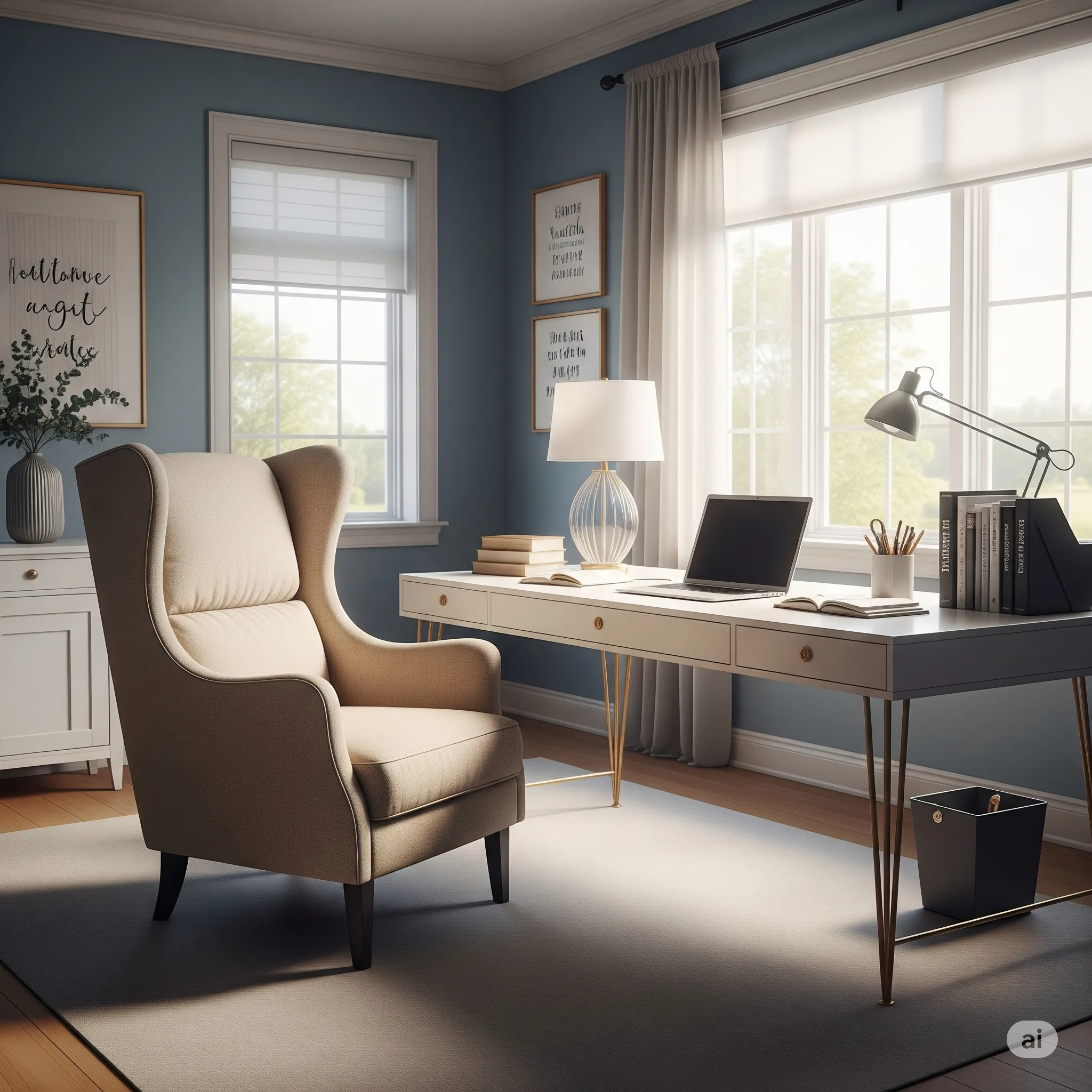A well-designed home office can do more than just look good—it can boost your focus, reduce stress, and help you enjoy your workday. Whether you work from home full-time, freelance on the side, or simply need a quiet space for study and organization, your office should support both productivity and well-being. In this guide, you’ll learn how to decorate a home office that balances function and comfort, helping you stay organized, motivated, and inspired.
Choose the Right Location
The first step to a successful home office is choosing the right space. If possible, dedicate a separate room or quiet corner that’s away from distractions.
Location Tips:
- Look for natural light—working near a window improves mood and focus.
- Choose a spot with privacy, especially if you take calls or need quiet.
- If space is tight, consider converting a closet, hallway niche, or part of a bedroom.
The more intentional your location, the better your productivity will be.
Invest in an Ergonomic Desk and Chair
Comfort and posture directly affect how well you work. Choosing the right desk and chair helps you stay focused and avoid fatigue.
Ergonomic Furniture Tips:
- Use a desk that fits your height and allows plenty of workspace.
- Invest in a supportive, adjustable chair with good lumbar support.
- Use a monitor riser or adjustable arm to keep screens at eye level.
- Consider a sit-stand desk for flexibility and movement.
You’ll be spending hours at your desk—make it as supportive as possible.
Maximize Natural and Layered Lighting
Lighting can make or break your workspace. Poor lighting leads to eye strain and low energy, while proper lighting boosts alertness and clarity.
Lighting Strategy:
- Place your desk near a window for natural daylight.
- Use a desk lamp with warm white LED bulbs (3000–4000K).
- Add ambient lighting like floor lamps or ceiling lights for general brightness.
- Use task lighting with adjustable arms for close-up work.
Avoid harsh overhead lights or working in shadows—layered lighting is best.
Choose a Calming and Focused Color Palette
The colors around you can influence how you feel and think. Choose a palette that promotes clarity, calmness, and creativity.
Productive Color Ideas:
- Blues and greens: Calm, help with focus and reduce stress.
- Neutrals: Light grays, beiges, and whites feel clean and open.
- Pops of warm tones: Mustard yellow, terracotta, or burnt orange can energize without overwhelming.
Avoid overly bright or dark colors unless balanced with neutrals.
Use Smart Storage Solutions
A clutter-free space clears your mind and helps you concentrate. Smart storage keeps everything within reach, without visual mess.
Storage Options:
- Floating shelves to hold books, boxes, or decor.
- Drawer organizers for supplies and tech.
- Filing cabinets or mobile carts for papers and office tools.
- Decorative baskets or bins for quick access items.
Combine open and closed storage to keep balance between aesthetics and function.
Incorporate Personal Touches for Comfort
While productivity matters, comfort and inspiration make the space truly yours. Adding personal touches improves mood and creates a space you enjoy spending time in.
Comfort & Decor Ideas:
- Add an indoor plant or two for freshness and cleaner air.
- Include artwork, motivational quotes, or photos that inspire you.
- Use a rug to soften the floor and reduce echo.
- Keep a cozy throw or pillow on a side chair or reading nook.
These elements help create a space that feels warm and motivating.
Minimize Tech Clutter
Cables, devices, and accessories can pile up quickly in a home office. Keep your tech organized for both function and aesthetics.
Cable Management Tips:
- Use cord organizers or trays to keep cables hidden.
- Mount power strips under the desk.
- Choose wireless keyboards, mice, and chargers when possible.
- Hide routers and modems in decorative boxes or cabinets.
Clean surfaces help maintain mental clarity.
Set Up Zones If Space Allows
If your office is large enough, create different zones for different tasks. This helps you shift focus and break up long workdays.
Common Zones:
- Primary workstation: Desk, monitor, keyboard, etc.
- Reading or brainstorming area: Comfortable chair, soft lighting, notepad.
- Creative or planning corner: Whiteboard, corkboard, or pinboard.
- Storage zone: Cabinets, shelves, or closet.
Zoning makes the space more dynamic and engaging.
Keep It Flexible and Adaptable
Your needs may change, so design your space to evolve with you. Choose flexible furniture and decor you can adjust as your work style shifts.
Flexibility Tips:
- Use a foldable desk or wall-mounted workstation in shared spaces.
- Choose modular storage units that can be rearranged.
- Use wheeled chairs or carts for easy reconfiguration.
- Keep decor minimal and update seasonally or as your work changes.
The more adaptable your space, the more functional it stays over time.
Final Thoughts: Build a Space That Works for You
A great home office is more than just a place to work—it’s a space that supports your goals, reflects your style, and encourages your best thinking. With the right balance of organization, comfort, lighting, and personal touches, you can design a workspace that makes every day more productive and enjoyable.
Start with your needs, stay true to your aesthetic, and don’t be afraid to tweak things over time. When your office is tailored to you, work feels better—and life flows more smoothly.
